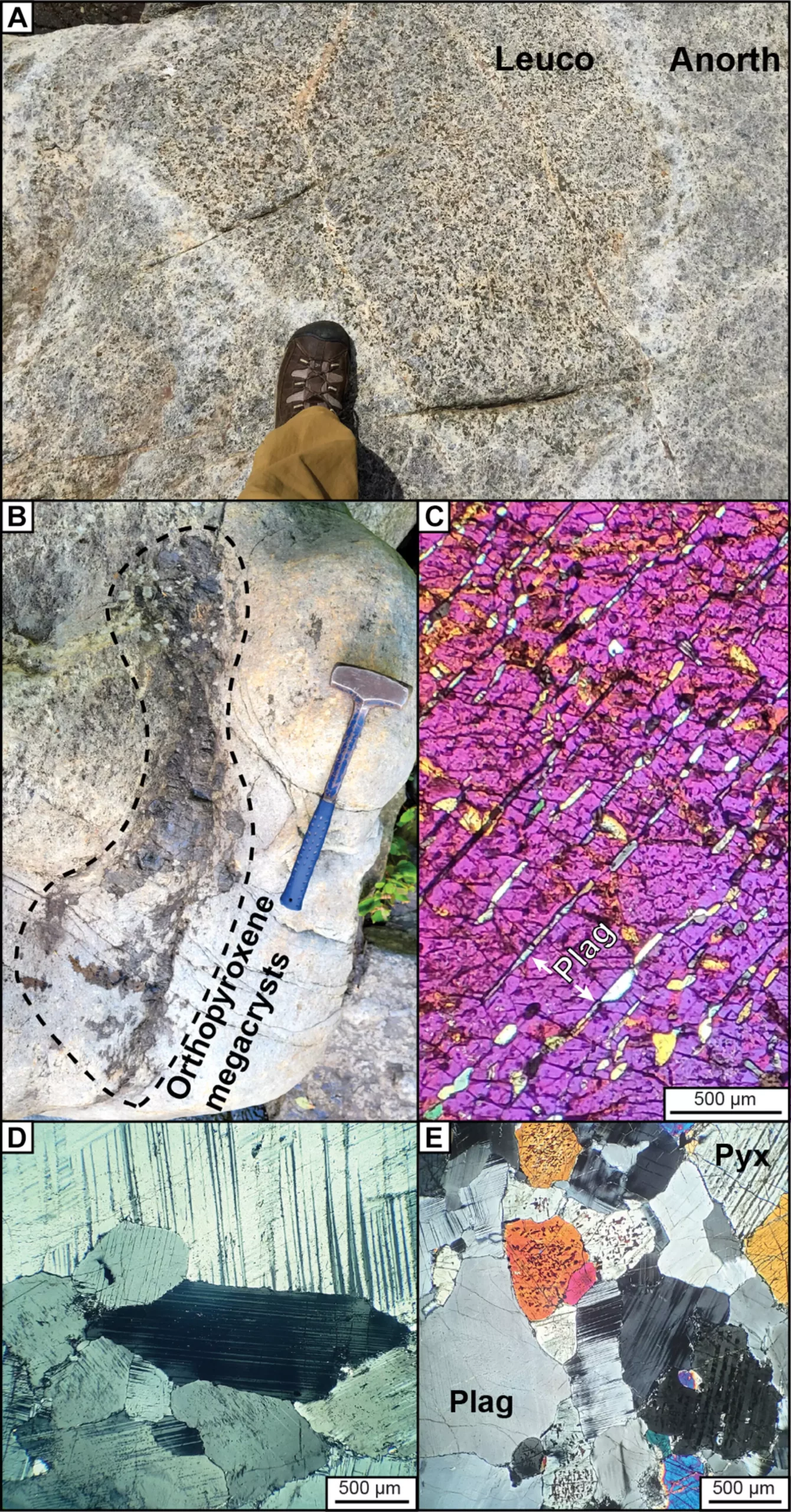The study of massif-type anorthosites has long been a source of confusion for scientists. These plagioclase-rich igneous rock formations, covering vast areas and hosting valuable titanium ore deposits, have posed a challenge due to conflicting theories about their origins. However, a recent study published in Science Advances has shed new light on the formation of these enigmatic rocks, providing insights into Earth’s complex geological processes.
Led by researchers Duncan Keller and Cin-Ty Lee from Rice University, the study focused on analyzing massif-type anorthosites to unravel the mysteries surrounding their formation. By examining isotopes of boron, oxygen, neodymium, and strontium in rocks like the Marcy and Morin anorthosites, the team discovered a striking connection between Earth’s evolving mantle and crust. The findings point towards a process involving the extensive melting of subducted oceanic crust beneath convergent continental margins, linking the formation of these rocks to Earth’s thermal and tectonic evolution.
The research suggests that massif-type anorthosites may have originated from very hot subduction events that occurred billions of years ago when the mantle was significantly warmer. This new understanding challenges previous notions about the formation of these rocks and opens up possibilities for exploring Earth’s ancient history in greater depth. By combining traditional geological methods with innovative boron isotopic analysis, the study provides a fresh perspective on how massif-type anorthosites offer valuable insights into Earth’s early geological processes.
The significance of this research extends beyond the realm of geology, offering implications for Earth’s broader tectonic and thermal history. By unraveling the secrets hidden within massif-type anorthosites, scientists can gain a deeper understanding of ancient rock formations and their role in shaping the planet over billions of years. The interdisciplinary nature of this study, involving experts from various fields, highlights the importance of collaborative research in unlocking the mysteries of Earth’s geological past.
As our knowledge of massif-type anorthosites continues to evolve, new questions and avenues for exploration emerge. The unique insights gained from this study pave the way for further investigations into Earth’s early geological processes, providing a glimpse into the planet’s distant past. By delving into the formation of these intriguing rock formations, scientists can piece together the puzzle of Earth’s history and gain a deeper appreciation for the dynamic forces that have shaped our planet over millennia.



Leave a Reply